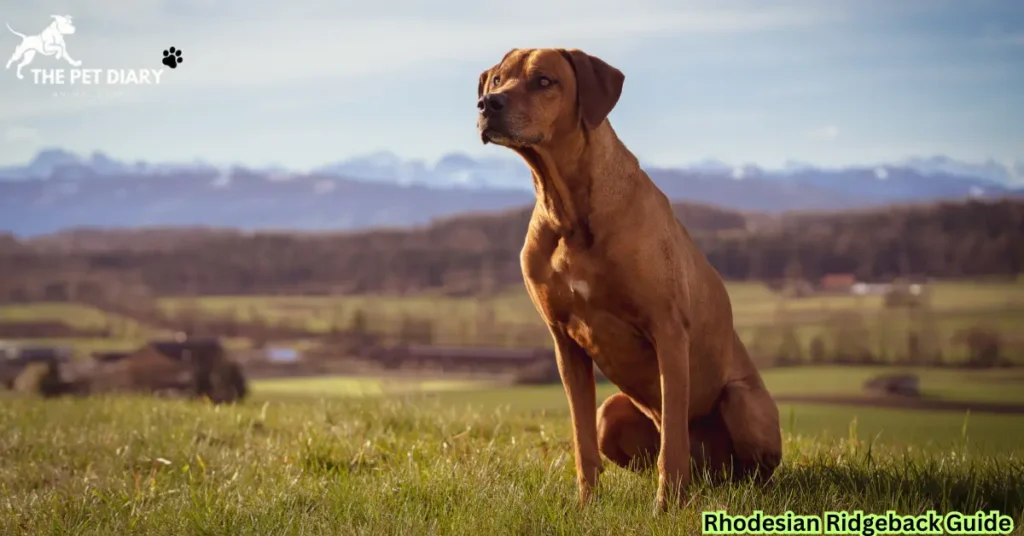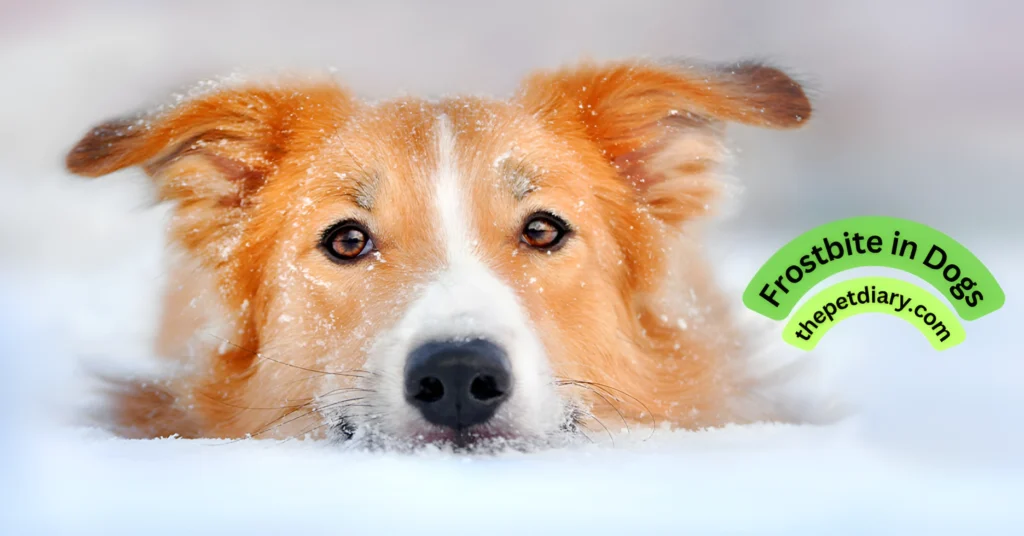The Rhodesian Ridgeback is far more than a striking hound with a trademark ridge of hair along its spine. Bred for courage and endurance, this athletic dog blends history, loyalty, and intelligence into one remarkable companion. Whether you are considering a Rhodesian Ridgeback puppy, researching dog food for Rhodesian Ridgeback, or simply curious about the breed’s storied past, this guide delivers everything you need to know.
Deep Dive into Breed History & Origin
Indigenous Roots in Southern Africa
Long before European settlers arrived, the Khoikhoi people of southern Africa kept semi-domesticated hunting dogs known for resilience and a unique ridge of backward-growing hair. These indigenous canines formed the genetic foundation of today’s Rhodesian Ridgeback.
Colonial Influence and Lion Hunting
In the late 17th and early 18th centuries, Dutch and later British settlers brought breeds such as Greyhounds, Mastiffs, and Great Danes. Crossing these imports with local ridge-backed dogs produced an agile, muscular hunter able to track and corner large game, including lions, without excessive aggression. This ability earned the nickname “African Lion Hound,” a testament to the breed’s courage.
Modern Recognition and Spread Worldwide
The first formal breed standard emerged in Rhodesia (now Zimbabwe) in the 1920s. The American Kennel Club granted recognition in 1955, and the Rhodesian Ridgeback quickly gained international admiration for its striking looks and devoted temperament.
Related Post: Great Dane Guide – Complete Care, Training, Lifespan & Health Tips
Physical Characteristics in Detail
| Trait | Males | Females |
|---|---|---|
| Height | 25–27 inches (63–69 cm) | 24–26 inches (61–66 cm) |
| Weight | 80–90 lbs (36–41 kg) | 65–75 lbs (29–34 kg) |
| Body Type | Muscular, athletic, deep-chested | Slightly lighter yet powerful |
| Coat | Short, dense, sleek | Short, dense, sleek |
| Rhodesian Ridgeback lifespan | 10–12 years | 10–12 years |
The hallmark ridge is a strip of hair growing opposite the rest of the coat, flanked by two identical whorls or “crowns.” This ridge is the defining feature that gives the Rhodesian Ridgeback its name.
Temperament & Personality
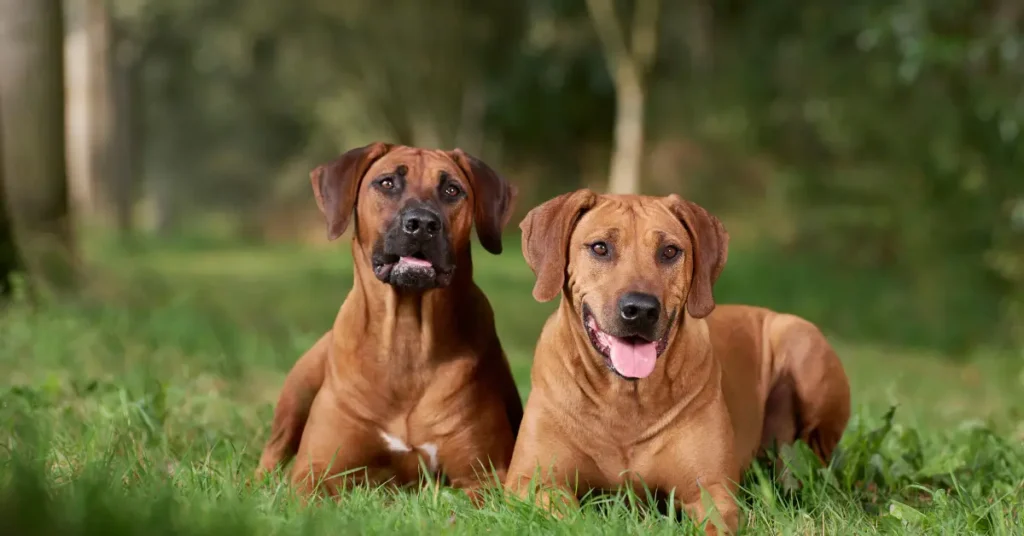
Loyal Family Guardian Rhodesian Ridgeback Dog
Despite a fearless hunting background, the Rhodesian Ridgeback is gentle and affectionate with family members. They develop strong bonds and often act as quiet, watchful guardians.
Intelligent Yet Independent
This breed is clever and learns commands quickly, but a streak of independence means consistent, positive training is essential. Without guidance, a Ridgeback may attempt to make its own rules.
Comprehensive Grooming and Care
Although their coat is short and low-shedding, grooming is vital for overall health and shine.
Weekly Coat Routine
-
Brushing: Use a rubber curry brush or grooming mitt once or twice weekly to remove loose hair and distribute natural oils.
-
Bathing: A bath every 6–8 weeks with a gentle dog shampoo keeps the coat glossy without stripping essential oils.
-
Skin Check: During brushing, inspect for bumps, parasites, or hot spots.
Seasonal Grooming Tips
-
Summer: Increase brushing frequency to control warm-weather shedding.
-
Winter: While the coat is short, a lightweight dog jacket helps during cold walks in northern climates.
Nail, Ear, and Dental Care
-
Nails: Trim every 3–4 weeks to prevent splitting or discomfort.
-
Ears: Clean weekly with a vet-approved solution to avoid infection.
-
Teeth: Brush at least three times a week and provide dental chews to fight plaque.
Daily Exercise Needs
The Rhodesian Ridgeback thrives on activity and mental stimulation.
Minimum Activity
Expect 60–90 minutes of vigorous exercise daily, including brisk walks, runs, or fetch games.
Ideal Activities
-
Hiking or trail running
-
Agility or lure-coursing events
-
Scent-tracking games for mental engagement
Without adequate exercise, a bored Ridgeback may develop destructive habits like chewing or digging.
Choosing and Raising Rhodesian Ridgeback Puppies
Welcoming a Rhodesian Ridgeback puppy requires research and preparation.
Selecting a Reputable Breeder
Seek breeders who provide health clearances for hips, elbows, and thyroid conditions. Avoid puppy mills where socialization and genetic testing are often neglected.
Early Socialization
Expose your puppy to a variety of people, pets, and environments during the first 16 weeks to foster confidence and good manners.
Initial Training
Start with simple commands—sit, stay, come—using positive reinforcement. Early crate training and housebreaking set the foundation for a well-behaved adult.
Feeding & Nutrition
Proper nutrition is crucial for this active breed.
Choosing the Best Dog Food
Look for high-quality formulas rich in protein and healthy fats. Grain-free is optional; consult your vet based on your dog’s specific needs. Premium dog food for Rhodesian ridgebacks should list real meat as the first ingredient.
| Life Stage | Daily Food Amount | Notes |
|---|---|---|
| Puppy (2–6 months) | 3–4 cups | Split into 3 meals; supports rapid growth |
| Adolescent (6–12 months) | 2.5–3.5 cups | Transition to twice-daily feeding |
| Adult | 2–3 cups | Adjust for activity level |
| Senior | 1.5–2.5 cups | Monitor weight and joint health |
Supplements
For joint health, many vets recommend glucosamine and chondroitin, particularly as the dog approaches middle age.
Training & Mental Stimulation
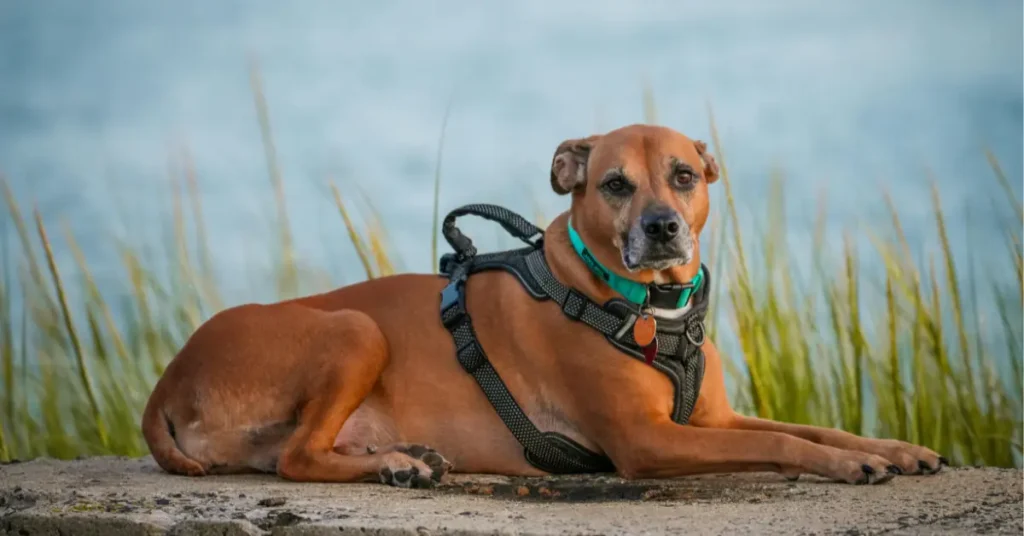
Positive Reinforcement
Reward-based methods work best for this sensitive yet independent breed. Harsh corrections can create distrust.
Puzzle Toys & Scent Games
Interactive feeders and hide-and-seek games challenge the mind and prevent boredom.
Health Care & Preventive Measures
The Rhodesian Ridgeback is generally robust, but proactive health management ensures a long, comfortable life.
Common Health Concerns
-
Hip and Elbow Dysplasia: Large breeds are prone to joint issues. Ask breeders for OFA or PennHIP certifications.
-
Dermoid Sinus: A congenital skin defect; reputable breeders screen for it.
-
Hypothyroidism: Watch for weight gain or lethargy; annual blood tests are wise.
Vaccination & Checkup Schedule
-
Puppy Shots: DHPP and rabies between 6–16 weeks.
-
Yearly Exams: Full physical plus dental check.
-
Senior Care: Twice-yearly exams after age 7 to monitor thyroid, joints, and heart.
Growth and Weight Milestones
| Age | Average Weight | Key Development Stage |
|---|---|---|
| 8 wks | 15–20 lbs | Early socialization, house training begin |
| 4 mo | 40–50 lbs | Rapid growth; switch to twice-daily feeding |
| 8 mo | 60–70 lbs | Adolescent; reinforce obedience |
| 12 mo | 70–90 lbs | Transition to adult food |
| 2 yr | 80–95 lbs | Full maturity; maintain a steady exercise routine |
Average Rhodesian Ridgeback Price
Expect $1,200–$2,500 for a well-bred puppy. Show or champion lines can exceed $3,000.
Rhodesian Ridgeback Dog Cost of Ownership:
| Expense | Typical Cost |
|---|---|
| Premium food | $60–$90 |
| Routine vet care | $40–$70 |
| Training classes | $30–$50 |
| Insurance | $25–$60 |
| Misc. (toys, etc.) | $20–$40 |
Annual Rhodesian Ridgeback costs typically total $1,000–$1,500 beyond purchase.
Rhodesian Ridgeback Puppy Price
A Rhodesian Ridgeback puppy price varies with pedigree and health testing. Puppies with full registration and show potential may be at the higher end.
Adoption Alternatives
Consider a Rhodesian Ridgeback for adoption through breed-specific rescues. Adoption fees are usually $150–$400 and often include vaccinations and spay/neuter services.
Popular Rhodesian Ridgeback Mixes
Mixed breeds combine the Ridgeback’s athleticism with other traits.
Rhodesian Ridgeback German Shepherd Mix
The Rhodesian Ridgeback German Shepherd mix is intelligent, protective, and highly trainable.
Height: 24–27 inches
Exercise: At least 90 minutes daily
Best for: Active families who enjoy outdoor adventures.
Rhodesian Ridgeback Pitbull Mix
The Rhodesian Ridgeback Pitbull mix is muscular and affectionate but requires consistent socialization to prevent over-exuberance.
Other Rhodesian Ridgeback Dog Mix Options
A general Rhodesian ridgeback mix from Labrador blends to hound crosses can inherit a variety of coat colors and energy levels. Evaluate each dog’s temperament individually.
Rhodesian Ridgeback Dog Rescue:
For those who prefer adoption, a Rhodesian Ridgeback rescue provides carefully vetted dogs. Many rescues foster dogs in home settings, allowing volunteers to evaluate temperament before placement. This route not only saves a life but also often includes basic training.
Advanced Training Strategies
Off-Leash Reliability
Because Ridgebacks were bred to pursue prey, recall training is critical. Start with long-line practice and high-value treats.
Agility and Advanced Sports
Agility courses, lure coursing, and scent work challenge both mind and body, helping burn excess energy.
Behavioral Problem Solving
Address common issues like counter surfing or jumping early with consistent, positive methods. Avoid harsh discipline, which can create mistrust.
Lifestyle Considerations
Urban vs. Rural Homes
Although adaptable, the Rhodesian Ridgeback thrives in homes with large fenced yards or easy access to parks.
Travel & Vacations
Road Trips: Provide a secure crate and frequent rest stops.
Air Travel: Check airline rules early; large breeds usually fly in cargo.
Family Dynamics
They are affectionate with children when socialized properly and can live peacefully with other pets if introduced early.
Seasonal Grooming & Specialized Care
While the Rhodesian Ridgeback has a short, easy-care coat, seasonal attention keeps it healthy and glossy year-round.
Spring
-
Shedding Spike: Increase brushing to three times per week to remove loose undercoat.
-
Allergy Watch: Pollen can irritate skin. Wipe paws after outdoor walks.
Summer
-
Sun Protection: Apply dog-safe sunscreen to ears and nose during long hikes.
-
Hydration: Carry collapsible water bowls and offer water every 30 minutes during exercise.
Autumn
-
Tick Prevention: Fall hikes can expose dogs to ticks. Use vet-approved repellents and check the ridge carefully.
-
Paw Care: Moisturize pads with a dog-safe balm to avoid cracking.
Winter
-
Dry Skin: Add omega-3 supplements to meals for coat health.
-
Light Jacket: In colder regions, a fleece jacket helps maintain body heat.
Senior Rhodesian Ridgeback Dog Care:
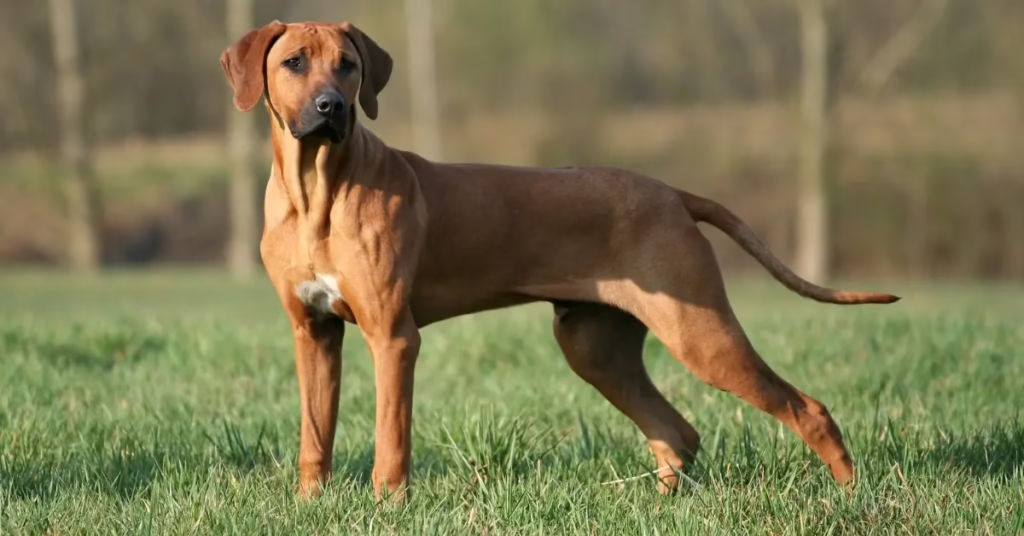
Nutrition Adjustments
Older Ridgebacks often need fewer calories but more joint support. Choose senior formulas rich in glucosamine and chondroitin.
Low-Impact Exercise
Replace daily runs with brisk walks and gentle swimming to protect aging joints.
Health Monitoring
Schedule biannual vet visits for thyroid, kidney, and heart checks. Early detection of issues like arthritis can dramatically improve quality of life.
Feeding & Meal Planning in Detail
Sample Daily Menu for an Adult (80 lb / 36 kg Dog)
-
Breakfast: 1.5 cups high-protein kibble mixed with ¼ cup wet food.
-
Dinner: 1.5 cups kibble with a tablespoon of salmon oil.
-
Snacks: Carrot sticks or apple slices (avoid seeds).
Homemade Options
For owners who prefer home cooking, a balanced recipe might include lean turkey, brown rice, and steamed vegetables. Always consult a veterinary nutritionist before switching.
Exercise Routines for Every Life Stage
| Life Stage | Ideal Daily Activity | Special Notes |
|---|---|---|
| Puppy | 4–5 short play sessions | Avoid forced running to protect joints |
| Adolescent | 60–90 min vigorous exercise | Include obedience training |
| Adult | 90 min+ high-intensity | Hiking, agility, or running partners |
| Senior | 30–45 min gentle walks | Add mental games to maintain sharpness |
Consistency is key. The Rhodesian Ridgeback is happiest when both mind and body are engaged.
Annual Budget Planner
Owning this breed is rewarding but requires financial planning.
| Expense Category | Estimated Yearly Cost (USD) |
|---|---|
| Premium food & treats | $800–$1,000 |
| Routine veterinary care | $500–$800 |
| Preventive medications | $200–$400 |
| Pet insurance (optional) | $300–$700 |
| Training & enrichment toys | $200–$400 |
| Misc. (grooming, boarding) | $300–$600 |
| Total | $2,300–$3,900 |
This table helps prospective owners calculate the Rhodesian Ridgeback cost of responsible ownership.
Living with a Rhodesian Ridgeback Dog – Owner Insights
Real-Life Experiences
Many owners describe the breed as “a couch potato indoors and an athlete outdoors.” They enjoy lounging with family, yet spring into action for a run or hike.
Common Challenges
-
Prey Drive: Early recall training is critical.
-
Stubborn Streak: Patience and positive reinforcement pay off.
Rewards of Ownership
Unwavering loyalty and gentle affection make the Rhodesian Ridgeback a beloved family member for those who meet its exercise needs.
Travel and Adventure Tips
Hiking & Camping
Pack a canine first-aid kit and ensure your dog carries a lightweight backpack with water and collapsible bowls.
International Travel
Check destination regulations for large dogs and secure a health certificate from your veterinarian.
Final Thoughts – Is the Rhodesian Ridgeback Dog Right for You?
The Rhodesian Ridgeback is a breed of strength, elegance, and deep devotion. From choosing a healthy Rhodesian Ridgeback Puppy, to selecting nutritious dog food for Rhodesian Ridgebacks, to planning lifelong care, owners must commit to regular exercise, positive training, and thoughtful budgeting.
Whether you adopt through a Rhodesian Ridgeback rescue, invest in a show-quality pup, or fall in love with a Rhodesian Ridgeback mix, the rewards are immense: a steadfast companion who is protective, affectionate, and endlessly adventurous. Discover
Rhodesian Ridgeback Dog:
Care, training tips, and fun facts here 👉 thepetdiary.com
